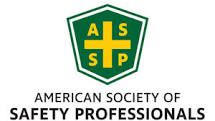Why Worker Ownership of Safety is the best Investment | FIRST, VERIFY
A wise man once said that spending a small amount of time and effort early on is a good investment. It can save you from additional trouble in the end.
This thought is applicable to many situations, but especially so when it comes to workplace safety. Safety professionals have long recognized the value of prevention, and statistics had proven that for every serious injury event, there will have been 29 injury accidents and 300 near-misses.
Keeping a track of near-misses is definitely a powerful tool for safety professionals. Planning for what comes next and focusing on what are known as “good catches” is even more effective.
A “good catch” is recognition by an employee of a condition or situation that had the potential to cause an incident but did not cause one due to corrective action and/or timely intervention by the employee. For example, as one worker prepares to climb a ladder on his way to perform a task at an elevated level, a second worker notices that his fall protection harness is not correctly secured, so he stops the first and helps him adjust it.
Good catches develop when workers truly believe they’re responsible for their own safety, have the right training and the confidence to speak up when they spot something concerning, and know they won’t be punished or penalized for pointing out problems. While near-miss reporting can be very valuable, good catch programs are even more powerful, because they address situations before a near-miss can occur.
When a worksite has an effective program that encourages and celebrates good catches, it creates a proactive safety environment and can even boost worker morale. Just like near-miss reporting, a formal good catch program promotes reporting and learning while providing important metrics that can be tracked and improved over time. It turns a company’s safety philosophy into a clear reality. And, as workers see safety advisors and supervisors call attention to good catches, they’re more likely to make them, enhancing overall safety.
Conventionally, companies have followed very old school means of promoting safety behavior in the workplace, such as notice boards that announce the number of no incident or “safety” days.
Statistic prove that such efforts may actually discourage workers from reporting incidents because they’re afraid of being punished or blamed for “ruining” a good record. In other cases, companies may say they encourage reporting, but the complicated paperwork or process involved with making a report effectively discourages workers from doing so. As a result, such efforts result in underreporting.
A carefully designed good catch program accomplishes the same objective of a safer workplace without discouraging reports. No matter what kind of program is developed, company leadership has to embrace the idea of reporting good catches and issue (and stand behind) a clear message there will be no reprisals for making reports. Programs should work to make the reporting process easier.
It’s important to publicize and celebrate those good catches, and the celebration doesn’t have to be complicated or expensive. Recognition can be as simple as an email or a short note recognizing both the employee who has done the right thing and the person who submitted the card.
An important consideration of any good catch program is giving workers the opportunity to stop work anytime a corrective action is needed without having to worry that they’ll be punished. The slight delay caused by a good catch is minimal compared to the lost time a contractor will incur when a serious incident occurs.
Setting up your own good catch program is less complicated and time-consuming than you might expect, and it will begin to provide immediate benefits. Best of all, it creates a safety mentality your workers will take with them long after the current project ends. That will continue to pay them — and you — back for a long time to come.






